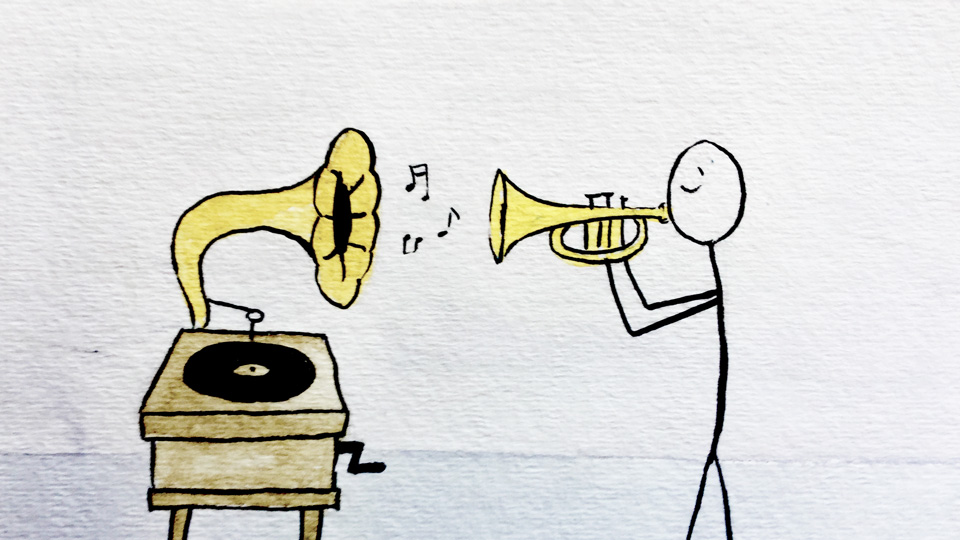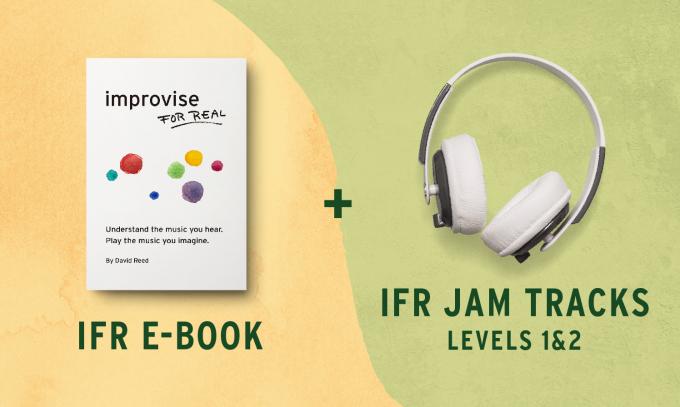Hi!
My question is about improvisation and expanding language. I’m a bit confused about how this fits into the IFR approach. I see the importance of knowing the sounds from the tonal map and being able to sing what you play. However, isn’t improvisation also a matter of transcribing other artists' music to absorb the “feel” and “time” they have, and then make one for yourself when improvising?
I don't know if I’m missing something from the method but I’m confused by your approach when everything else I’m being taught is about transcribing others’ work. Can you please give me an explanation of my problem?
Best wishes!
Daniel
David's response:
Hi Daniel,
Great question! In our view, there is no conflict between studying other people’s music (songs, melodies, solos, etc.) vs. studying the sounds individually. You can think of these as two complementary practices. Each one has advantages, and you’ll find that the IFR tonal map serves you in both cases. Let me take them one by one.
Practice 1: Studying the sounds yourself using IFR Exercises 2 and 3.
This approach has many advantages and it's the primary method that I teach. When you explore the sounds yourself, you will make many personal discoveries and find your OWN way of working with the sounds. Don’t worry about not having enough “language”. You’ve been listening to music all your life, and from the moment you begin to improvise with the exercise Seven Worlds (for example), your musical influences will immediately become apparent. I’ve worked with literally hundreds of students and to this day I have never heard two people improvise in the same way with that material. So one of the advantages of doing these purely creative exercises is that they help you to discover your own musical voice.
Practice 2: Studying the music of other people.
I agree that this is a wonderful practice and that it will add much to your musical understanding. Some melodies are so gorgeous that you just have to stop everything and transcribe those notes! If you’re already feeling that, then that’s great. The IFR tonal map is actually one of the most powerful tools you'll ever find for learning these musical lessons, because it gives you a CONTEXT in which to picture those melodies. When you transcribe a melody without this tonal context, it’s very easy to forget the melody again later. But when you can clearly see where this melody is located on your tonal map, then the melody itself enhances your understanding of each note involved. So even when you’re transcribing other people’s solos, IFR will help you to organize and remember all of those musical lessons, because the IFR Tonal Map gives you a visual model that enables you to picture and remember exactly where each melody can be found in any key.
Ideally, your music study should include both of the practices we’ve been talking about:
1) Study the sounds on your own, and trust your own sense of what's beautiful. 2) Study the music you love, and discover where those sounds are located on your tonal map.
The IFR Tonal Map concept will be invaluable to you in both pursuits. If you have any questions about either one of these practices, just let me know and I’ll be glad to help you.
Thanks Daniel, David

